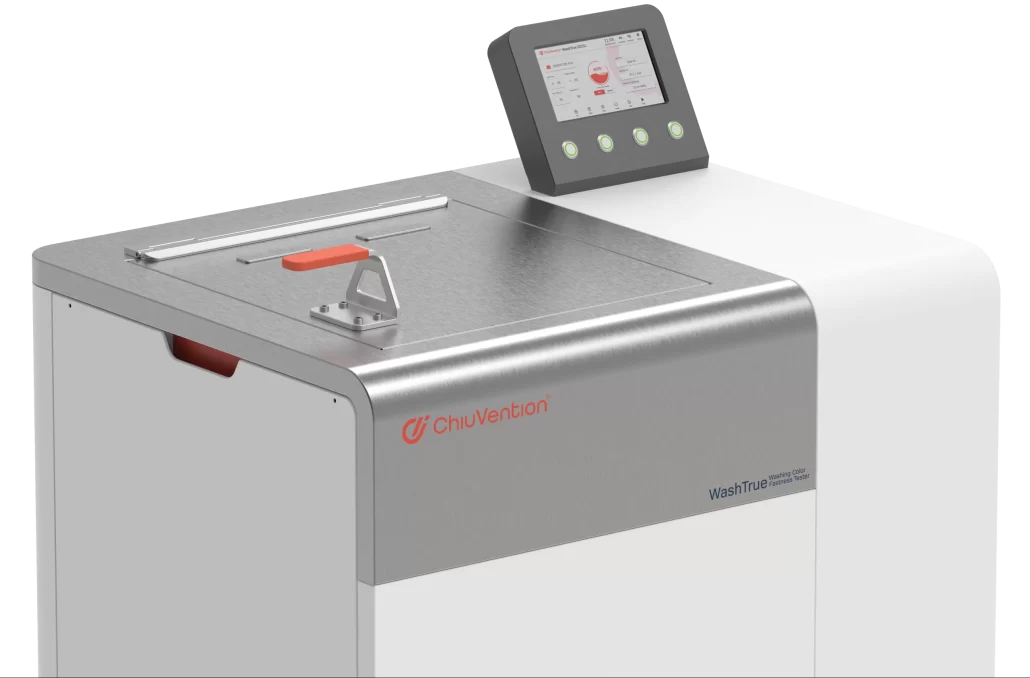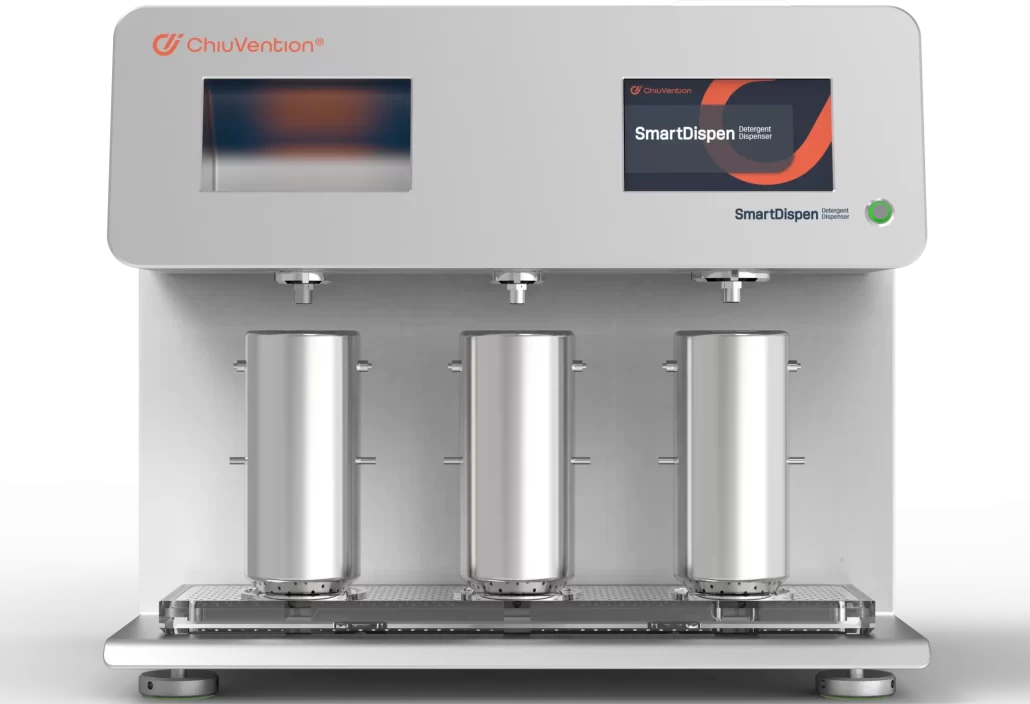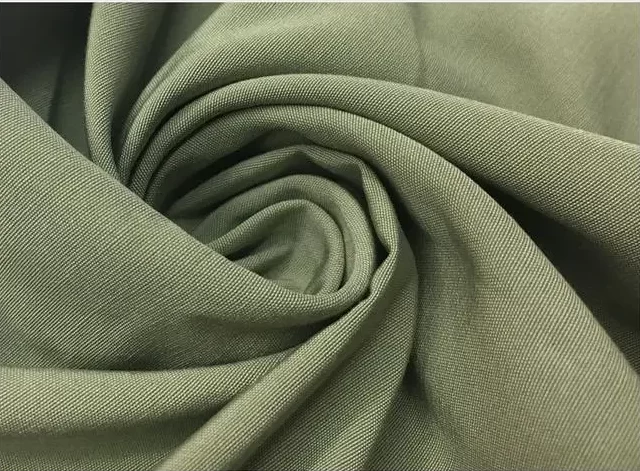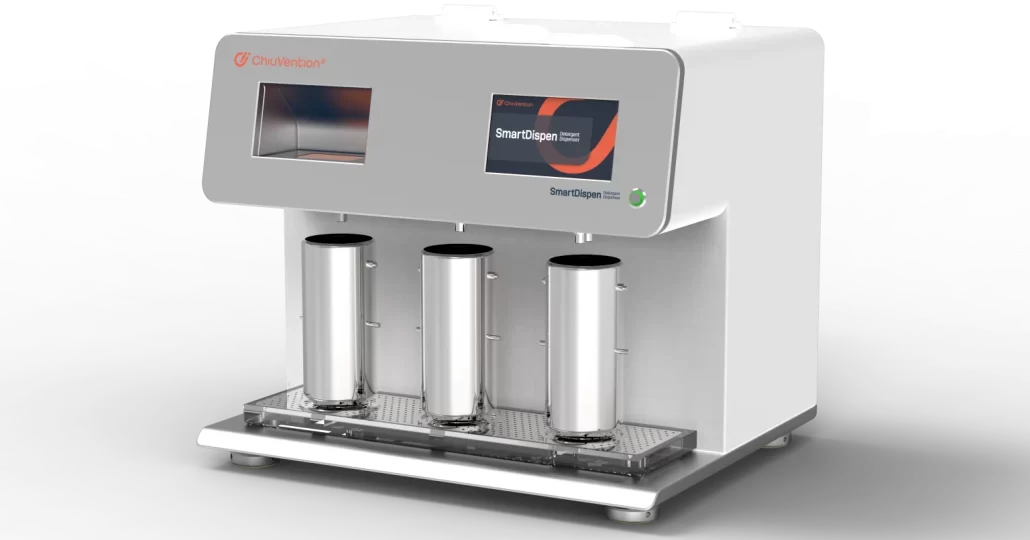The colour fastness of textiles to washing refers to the ability of textiles to maintain the original colour (hue, colour depth) after washing under the specified washing conditions, i.e. the textiles will not fade or change colour after washing, which is an important indicator reflecting the quality of printing and dyeing products. The unqualified discolouration or staining not only affects the appearance and performance of the product itself, but also seriously affects the appearance and performance of the textiles washed at the same time.
At present, the common test standards for colour fastness to washing include: ‘Colour Fastness of Textiles to Soaping’ (GB/T3921-2008); ‘Colour Fastness of Textiles to Domestic and Commercial Washing’ (GB/T12490-2007); ‘Colour Fastness of Textiles to Domestic and Commercial Washing’ (GB/T12490-2007); ‘Colour Fastness of Textiles to Soaping’ (GB/T3921-2008); ‘Colour Fastness to Domestic and Commercial Washing’ (GB/T12490-2007); and ‘Colour Fastness of Textiles to Domestic and Commercial Washing’ (GB/T12490-2007). Colour fastness to domestic and commercial washing’ (ISO105-C06:2010); “Textile colour fastness test part C10: Colour fastness to washing with soap or soda” (ISO105-C10:2006); “Colour fastness to washing with water: accelerated method” (AATCC61:2010).

Below is the test procedure of GBT3921-2008 and ISO105-C06-2010.
Colour Fastness of Textiles to Soaping(GB/T3921-2008)
Textile
colour fastness test part C06: Colour fastness to domestic and commercial laundering (ISO105-C06:2010)
1. Testing principle
The textile specimen is sewn together with one or two pieces of specified standard appliqué fabrics, placed in a mixture of soap solution and anhydrous sodium carbonate, mechanically agitated under specified time and temperature conditions, then washed and dried. The original sample as a reference sample, with a grey sample card or instrument to assess the specimen discoloration and lining fabric staining.
2. Instruments and equipment
① Suitable mechanical washing device, consisting of a rotating shaft equipped with a water bath. The rotating shaft is radial support for a number of capacity (550 ± 50) mL of stainless steel containers, diameter (75 ± 5) mm, high (125 ± 10) mm, from the centre of the shaft to the bottom of the container distance of (45 ± 10) mm. shaft and container rotation speed of (40 ± 2) r / min. temperature of the water bath by the thermostat control, so that the test solution is maintained at the specified temperature ± 2 ℃.
② Balance, accurate to ±0.01g.
③ Mechanical stirrer with a minimum speed of 16.667r/s (1000r/min) to ensure that the substance in the container is fully dispersed and to prevent precipitation.
④ Corrosion-resistant stainless steel beads with a diameter of approximately 6mm.
⑤ Device for heating soap, such as a heating plate.
3. Reagents and standard substances
① Reagent preparation
Soap, by dry weight, containing no more than 5% moisture, and meet the following requirements: free alkali (as Na₂CO₃) ≤ 0.3%; free alkali (as NaOH) ≤ 0.1%; the total fat matter ≥ 850g / kg; prepared soap mixed fatty acids freezing point of ≤ 30 ° C; iodine value of ≤ 50; Soap should not contain fluorescent whitening agent.
Anhydrous sodium carbonate (Na₂CO₃).
Soap solution with 5 g of soap (a.) per litre of water (d.) for tests under conditions A and B (Table 2-7) and 5 g of soap (a.) and 2 g of sodium carbonate (b.) per litre of water for
color fastness to washing tests under conditions C, D and E (Table 2-7). It is recommended that the soap be well dispersed and dissolved in tertiary water at a temperature of (25 ± 5) °C with a stirrer for (10 ± 1) min.
Tertiary water.
② Appliquéd fabrics, selected according to a. or b.
a. Multi-fibre lining fabrics, selected according to the test temperature:
DW type (including acetate, cotton, nylon, polyester, acrylic, wool, 1.5cm wide)
Type TV (containing acetate, cotton, nylon, polyester, acrylic, viscose, 1.5cm wide)
Multi-fibre lining fabrics containing wool and acetate (for tests at 40°C and 50°C, and in some cases also at 60°C, to be specified in the test report).
Multifibre interlining fabrics without wool and vinyl (for some tests at 60°C and all tests at 95°C).
b. Two pieces of single-fibre interlining fabric. The first piece is made of fibres of the same type as the specimen and the second piece is made of fibres specified in Table 1. If the specimen is a blend or interwoven, the first piece is made of fibres of primary content and the second piece is made of fibres of secondary content, or as otherwise specified.
| Serial number | First piece | Second piece |
| Tests at 40℃ and 50℃ | Tests at 60℃, 70℃ (some standards) and 95℃ |
| 1 2 3 4 5 6 8 9 | Cotton Wool Hemp Silk Viscose Vinyl Polyamide Polyester Polyacrylonitrile | Wool Cotton Cotton Wool Wool Viscose Wool or Cotton Wool or Cotton Wool or cotton | Viscose Fibre Viscose Cotton Viscose Cotton Cotton Cotton |
4. Specimen preparation
① If the specimen is a fabric, prepare a combined specimen by one of the following methods.
Take a 100mm x 40mm specimen and sew it to a 100mm x 40mm multi-fibre lining fabric [(3) ②b.] with the front side in contact with a short edge.
Take a 100mm x 40mm specimen and sandwich it between two pieces of 100mm x 40mm single-fibre lining fabric [(3) ②b.], sew along a short edge.
② If the specimen is yarn, the yarn may be woven into a fabric and tested in the same manner as the fabric. When the specimen is yarn or loose fibre, take a mass of yarn or loose fibre approximately equal to half of the total mass of the appliquéd fabric and prepare a combined specimen in one of the following ways.
Clamped between a piece of 100mm x 40mm multi-fibre lining fabric and a piece of 100mm x 40mm dyed non-colourful fabric, along the four sides of the sewing (see GB/T6151).
Clip between two pieces of 100mm × 40mm prescribed single-fibre lining fabric, sewing along the four sides.
③ Determine the mass of the combined specimen with a balance in g for accurate bath ratio. The bath ratio is 50:1, temperature, time, number of balls, sodium carbonate test parameters are shown in Table 2.
| Test method number | Temperature/°C | Times | Number of balls | Sodium carbonate |
| A① B② D③ G④ E⑤ | 40 50 60 95 95 | 30min 45min 30min 30min 4h | 0 0 0 10 10 | + + + |
Note: ‘+’ indicates that sodium carbonate is to be added to the experiment.
5. Procedure
① Prepare the soap solution according to the test method.
② The combination of specimens and the specified number of stainless steel beads in the container, according to Table 2-7 injected preheated to the test temperature ± 2 ℃ of the required amount of soap, bath ratio of 50:1, cover the container, and immediately according to the temperature and time specified in Table 2-7 operation, and start timing. Note that it is desirable to clearly separate the containers used for the fluorescent whitener and non-fluorescent whitener tests. (NOTE: Fluorescent brighteners in detergents used in other tests and in commercial detergents may stain containers. If such stained containers are used in subsequent tests using detergents that do not contain fluorescent brighteners, the colour fastness grade of the specimen may be affected.)
③ For all tests, remove the combination specimen at the end of washing. Wash them twice separately in tertiary water and then rinse in running water until clean.
④ For all methods, squeeze the excess water from the combination specimen by hand. (If necessary, leave one stitch on the short side, remove the rest of the stitches, and unfold the combined specimen.)
⑤ Place the specimen between two sheets of filter paper and squeeze to remove excess moisture, then hang it to dry in air at no more than 60°C, with the specimen connected to the lining by only one seam.
6. Analysis of results
Graded with grey sample card or instrument, compared with the original specimen, assessed the discolouration of the specimen and the staining of the lining fabric, then record the data and generate a paper test report. (ChiuVention colour fastness to washing tester: generate electronic test report online and share it with relevant parties with one click, smart and efficient!)
Steps of ChiuVention colour fastness to washing tester
WashTrue colour fastness to washing tester adopts intelligent temperature control algorithm to ensure that the
colour fastness to washing test meets the requirements and the results are reliable. A series of test operations can be completed on the touch screen, such as selecting standards, parameters, time, temperature setting, adding water, draining water and so on.
The washing fastness tester is connected via IoT technology to the SmarTexLab APP installed on the mobile phone/PC and to ERP/LIMS etc. via an API; the instrument can also be connected directly to ERP/LIMS. This allows the tester to obtain test orders and sample information from the system, perform the test, record the sample information, test process, test results, etc., and automatically summarise them into a test report, which can be sent back to SmarTexLab or ERP/LIMS, and then be viewed by all parties concerned in real time.
Testers can remotely monitor the test status of multiple instruments simultaneously, modify test requirements, be alerted when a test is complete, and remotely stop or repeat the test.
In SmarTexLab, you can set up programmes to start or stop instruments remotely; communicate with customer service personnel online for quick support; receive reminders that instruments need calibration, maintenance, and replacement of consumables; and perform OTA remote upgrades on a regular basis.
1. Preparation
① Put the test clothes into the cup together with the steel ball.
② Install the large test cup to the main shaft of the water cylinder (as shown in Fig. 1) and the small test cup to the main shaft of the water cylinder (as shown in Fig. 2).
Please make sure that no one is installing the test cups or sticking their hands into the left and right tanks before rotating the test cup clamps during the installation process.
Check that the water inlet pipe and the drain pipe are properly installed.
2. Weighing and Dispensing
Sample prep is now 6 times faster. It speeds up the washing colour fastness test. Three independent stations can dispense different soaps. With 24 test cups, the traditional method takes over 20 minutes. SmartDispen prep takes only 3 minutes.
More reliable testing: automatic weighing of the sample, automatic dispensing (according to the bath ratio configuration of soap and automatic stirring), automatic water filling, and automatic output of a set number of steel balls, one-step preparation of the samples required for colour fastness testing of washing, reducing the error of manual operation.
The SmartDispen Detergent Dispenser is IoT-enabled. You can view sample prep data in SmarTexLab, ERP, or LIMS.

3. Select the standard
Applicable to ISO105C06:2010, AATCC61-2013e3, GB/T12490-2014, M&SC4, AATCC190-2010e2(2016)e2, NEXTTM02 and other standards.
4. Start Test
Click the Start button to begin the test.
5. End of test
(Buzzer alarm) test is over. Remove the clothes in the cup. Click the drain button. The water must be below 70 degrees. Drain the water. The test is complete.
For more information on textile testing methods/standards
or textile testing machines, contact us:
What’s App: +86 180 2511 4082
Tel: +86 769 2329 4842
Fax: +86 769 2329 4860
Email: medium@chiuvention.com



